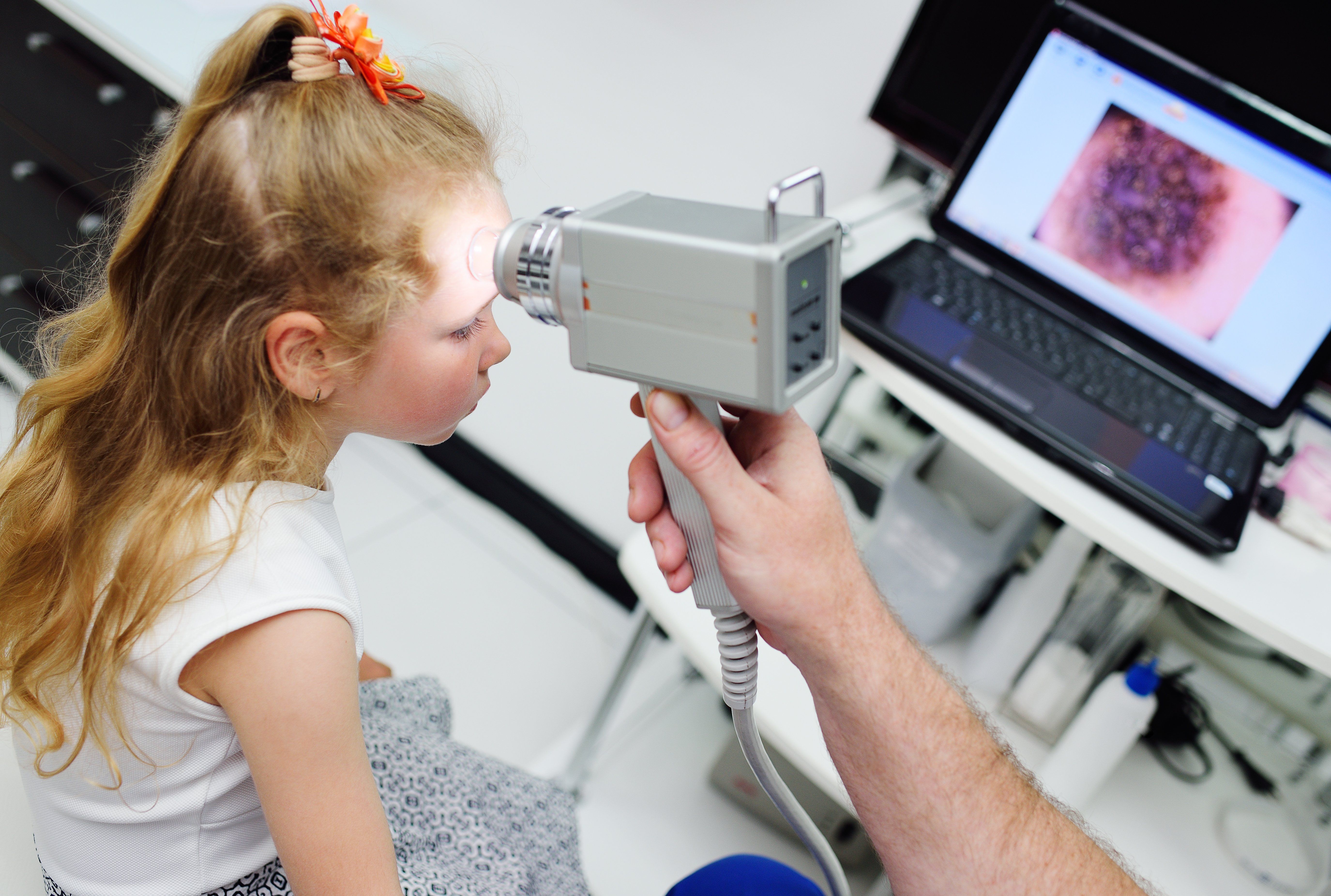- Case-Based Roundtable
- General Dermatology
- Eczema
- Chronic Hand Eczema
- Alopecia
- Aesthetics
- Vitiligo
- COVID-19
- Actinic Keratosis
- Precision Medicine and Biologics
- Rare Disease
- Wound Care
- Rosacea
- Psoriasis
- Psoriatic Arthritis
- Atopic Dermatitis
- Melasma
- NP and PA
- Skin Cancer
- Hidradenitis Suppurativa
- Drug Watch
- Pigmentary Disorders
- Acne
- Pediatric Dermatology
- Practice Management
- Prurigo Nodularis
- Buy-and-Bill
Publication
Article
Dermatology Times
Imaging techniques advance skin cancer management
Author(s):
Read about the recent advancements in noninvasive imaging modalities that are making an impact on dermatological care.
The future of skin cancer management lies in combinating of the available imaging technologies. (Evgeniy Kalinovskiy - stock.adobe.com)

Recent advancements in noninvasive imaging modalities are making an impact on dermatological care. Techniques such as reflectance confocal microscopy (RCM), optical coherence tomography (OCT), and the various innovative spectroscopies have all proven to be useful adjunctive tools in the diagnosis and management of suspicious pigmented lesions and nonmelanoma skin cancers - whether used alone or in combination.
According to Anthony M. Rossi, M.D., FAAD, it is in the combination of these technologies where the future of skin cancer management lies.
“Noninvasive imaging is not just an idea in the future; but, rather, already in current practice used across the world. Noninvasive imaging is something that we need to understand, and we should own it as dermatologists because it really is imaging of the skin. We use dermatoscopes and digital photography, so confocal microscopy is the next adjuvant tool that we should be using in skin cancer management,” says Dr. Rossi, a Mohs surgeon in the department of dermatology at Memorial Sloan Kettering Cancer Center, New York, N.Y. He spoke to colleagues during the Annual Conference of the American Society for Laser Medicine and Surgery, Denver.
Dr. Rossi says there is a push to integrate these imaging techniques into clinical practice where they can potentially serve as helpful tools to reduce biopsy procedures.
The limitation of RCM is that it only images 200 microns into the skin, reaching into the papillary dermis. In his current research, Dr. Rossi and his team utilize a clinical confocal microscope that combines both OCT and RCM. According to Dr. Rossi, it is the integration of RCM with OCT that gives you more of a depth of resolution, allowing a user to see both superficial and deep structures.
“Using our combination confocal/OCT microscope, we found that we can better image the architecture of the lesion. We can now image the depth as well as the breadth of the lesion, translating into a virtual 3D landscape of the area/lesion under scrutiny. In our patients, we’re using this technique for any suspicious lesion that we believe is amenable to it. We can actually estimate how deep a basal cell carcinoma is running in the skin, noninvasively,” Dr. Rossi says.
Another imaging technique they’re implementing is the use of video mosaics. Using confocal microscopy and a hand-held microscope (visoScope 3000), Dr. Rossi’s team creates real-time videos, imaging the lesion and the lesion margin status. These video images are then translated into a mosaic, similar to the panorama mode found on smartphones to create panoramic images.
“Video mosaic imaging with the confocal allows us to actually assess the whole margin status and view the image in real-time. We routinely found this technique to be very useful in accurately diagnosing suspicious lesions, but in particular, for the correlation of margin status to the actual lesion. In contrast to the old method of static confocal, video mosaicking lets you be more free form and allows you to correlate the mosaic image back to the actual patient,” Dr. Rossi says.
The integration of such new and innovative imaging technologies in widespread clinical practice is perhaps less of a financial issue, Dr. Rossi says, and more of a question of affinity and adoption by dermatologists. Perhaps at first perceived as a daunting task, Dr. Rossi says that the learning curve is manageable and concerns of learning to appropriately use and implement these technologies can be overcome after visiting device-respective teaching courses and workshops.
“We are seeing more interest and resources being devoted to technologies such as RCM. In my opinion, these advanced technologies are here to stay, and the more people adopt and embrace it the better chances we have to really own it,” Dr. Rossi says.






